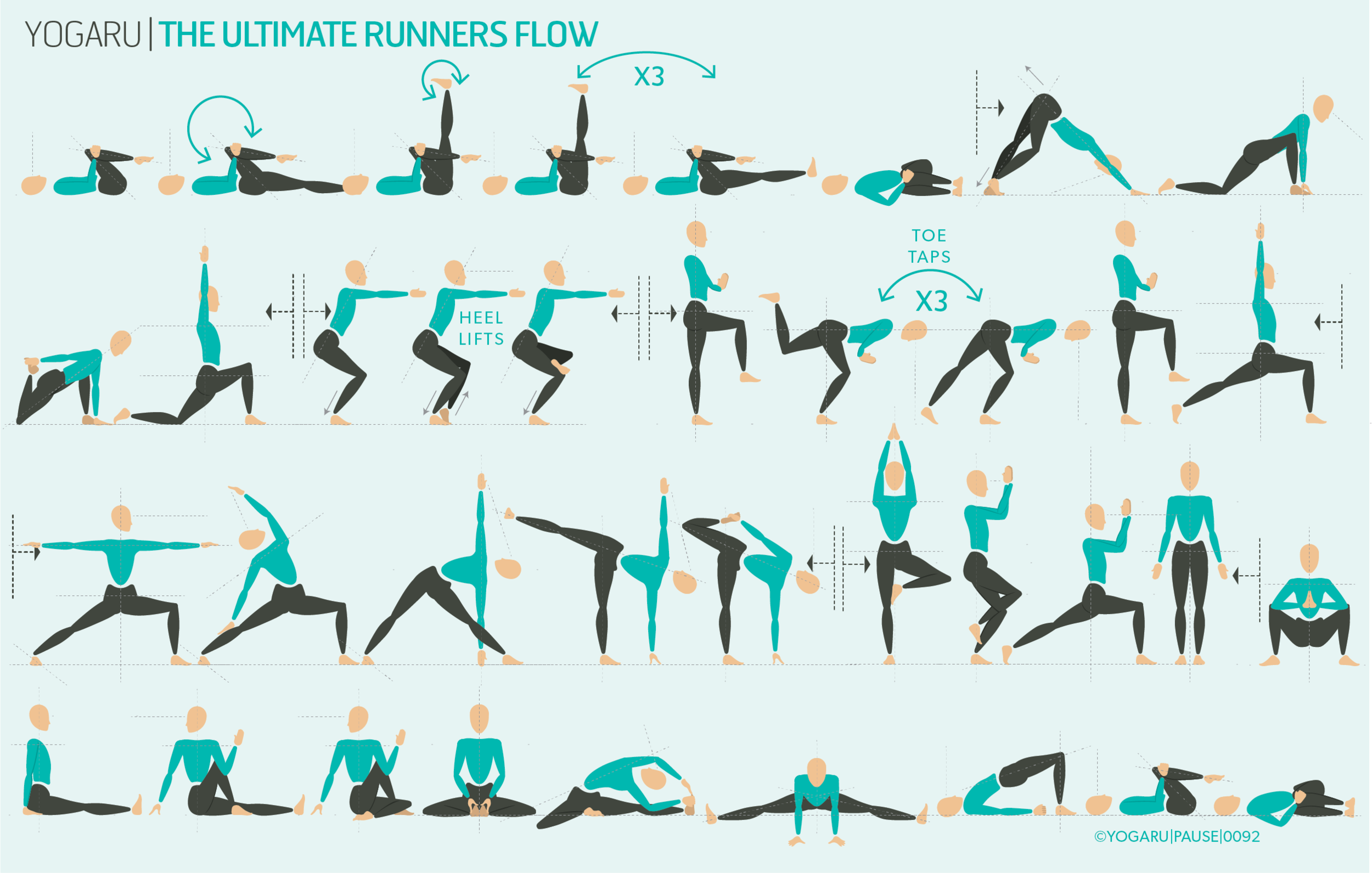SYMBIOSIS
There are more similarities to the benefits of yoga and running than you might expect. They both cultivate a meditative mindset to help you unwind and relieve symptoms of stress, tension and anxiety. Both practices are a constant journey with no finishing line, pardon the pun! In running they say you are racing with people not against them and in a yoga class you have a shared group energy. The breath is one of the most important components of both. In yoga we link the breath with movement to stimulate the rest and restore response, and in running the breath can be the differentiating factor between running the distance and running out of puff. From a physical point of view both strengthen your bones, increase lung capacity and strengthen the immune system.
They are the perfect partnership for balance and wellness. Running challenges your cardiovascular fitness and yoga helps you stay injury free and improves your strength, stability, flexibility and endurance. The movement skills in yoga loosens tight spots, stabilises weak spots, increases range of motion and improves your running posture. It gives you the opportunity to connect to your body and help you move with a fluid, reactive running cadence. It also cultivates a focused and calm mindset on and off the mat, and helps prepare you for long endurance runs.
WHAT A RUNNER NEEDS
Runners need strong, stable, flexible and responsive muscles. The feet in particular need to be strong enough to weather the repeated pounding and the changing terrain for off road running. Stability of the ankle and knee will help you go the distance injury free, and as with everything in life, prevention is better than cure. Strong, stable and flexible hip flexors, quads, calves and hamstrings are important for building performance levels, and a strong and supple core will protect the back as the body twists from side to side to project the legs forward with each stride.
EXPLORING RUNNERS FLOW IN YOUR PRACTICE
Contrary to popular belief yoga is not just about stretching, it is about equal amounts of stretching and strengthening for a balanced body. This sequence is not your traditional ‘yoga for runners’ sequence. It offers different ways of looking at runners needs beyond a hamstring stretch. With lots of ways to find strong, flexible and stable muscles and the supporting muscles around each joint. Pay particular attention to your transitions from pose to pose. They are often a missed opportunity and are just as important as the poses themselves. They are sometimes a safer way to stretch a tight muscle rather than in a static stretch and will also give you the opportunity to work on your mobility and stability of the joints too.
ALIGNMENT CUES
There is no single peak pose in this sequence. Each pose is there for a specific reason related to a runners needs. The single leg standing poses will build stability in your feet, ankle and knee joint; the standing poses will build strength, stability and flexibility in the hip flexors, quads, calves and hamstrings; the reclined core work and leg lifts will work build a strong and supple core; and the steaded poses will stretch out any build up of tension in the hips, inner groins. You’ll notice there is no mention of intense hamstring stretches. For most runners hamstring stretches are a frustrating endeavour that needs to be approached from a different angle. Pulling at tight muscles is the fastest way to cause injury to the connective tissues. As you move through the sequence the hamstring will gradually begin to lengthen in a more dynamic way than labouring through a sequence filled with static forward folds. Here are some tips to help you navigate your way through the sequence:
Move slowly through your warm up poses in row one. Circle each joint, remember to go both directions and notice any areas that feel tighter.
In Adho Mukha Svanasana/Downward Dog pause for a few breaths on each side with one knee deeply bent and the other leg straight as you press the heel down towards the ground. Feel the stretch through the back of the whole leg.
Flow through you toe taps and leg lifts mini flow in row two as slow as possible and notice the ankle of the standing leg working hard to find your balance.
In Ashta Chandrasana/Eight Crescent Moon press out through your left heel, lift your thigh up and firm your back leg. Squeeze the glute of your left leg to strengthen the hamstring and open the left hip flexor. Hug your outer hips strongly to the midline for balance.
Use a brick to raise the ground up for Ardha Chandrasana/Half Moon and Ardha Chandrasana Chapasana/Half Moon Sugarcane centre of row three.
Step back from Garudasana/Eagle to Ashta Chandrasana/Crescent Moon, take a breath and step forward to Tadasana/Mountain.
Spend at least 5-10 minutes in Savasana/Corpse Pose after you have finished the final pose which is a restorative spinal twist.
To save the images for personal use click and hold down the image until the ‘save image’ option appears; on Mac hold down ‘control’ and click the image to get the option box; on PC right click on the image to get the option box. Scroll down in the ‘option box’ and click ‘save image’.
Ruth Delahunty Yogaru




